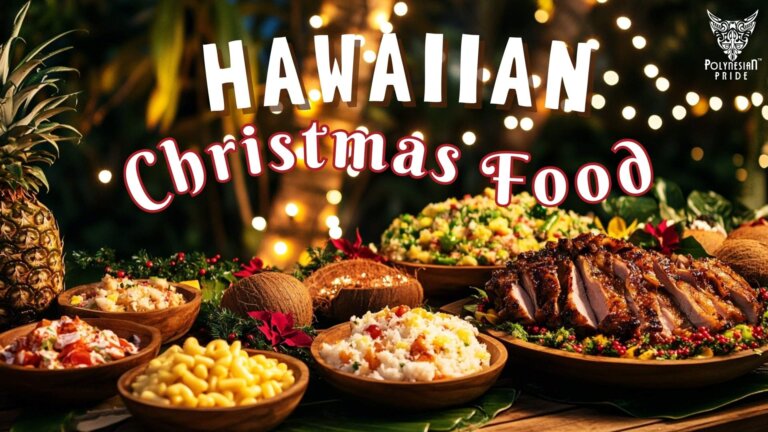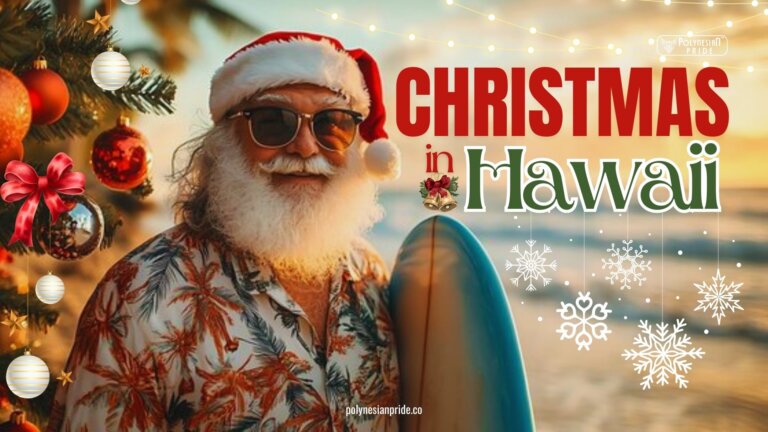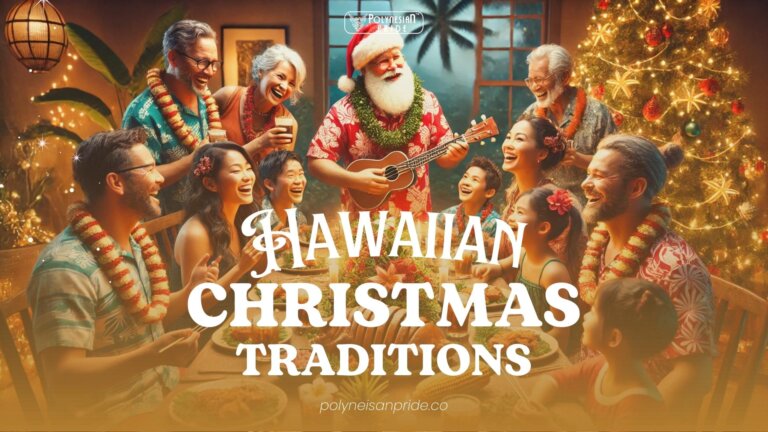Discover the Cook Islands: Paradise in the South Pacific

I. Introduction
Nestled in the heart of the South Pacific, the Cook Islands stand as a testament to nature’s beauty and Polynesian culture’s richness. This archipelago of 15 islands, spread over a vast expanse of crystal-clear waters, offers visitors a glimpse into a world where time seems to slow down and the worries of modern life fade away. From pristine beaches and lagoons to lush tropical landscapes and warm, welcoming locals, the Cook Islands present an idyllic escape for those seeking adventure, relaxation, or a deep dive into Polynesian heritage.
In this article, we will explore the geographical features, historical milestones, cultural nuances, and standout attractions that define the essence of the Cook Islands.
II. Geography
1. Location and Size
The Cook Islands is a nation composed of a group of islands in the Polynesian region, which forms part of the larger Oceania area in the South Pacific Ocean. It lies northeast of New Zealand, between American Samoa and French Polynesia. The country comprises 15 main islands spread across an ocean area of 2,200,000 km² (850,000 sq mi), and these islands are categorized into two main groups: the Southern Cook Islands and the Northern Cook Islands, composed of coral atolls. The Exclusive Economic Zone (EEZ) of the Cook Islands encompasses 1,960,027 square kilometers (756,771 sq mi) of ocean space. The administrative and political center of the Cook Islands is the town of Avarua, which serves as its capital city.
The islands originated from volcanic activity; the northern group is older and contains six atolls, essentially submerged volcanoes with coral growth on their summits. The Cook Islands include 15 islands along with two reefs. Within the islands’ territory are two distinct terrestrial ecoregions: the Central Polynesian tropical moist forests and the Cook Islands tropical wet forests.

2. Climate
All the islands lie within the tropics, although the southernmost barely fits. The Cook Islands have moderate temperatures due to their small size and mid-ocean location, influenced by southeast trade winds. Rarotonga’s average annual temperature is around 75°F (24°C), while Penrhyn, the northernmost island, averages in the low 80s°F (28°C).

The best time to visit the Cook Islands is from June to August because you can enjoy the most sunshine and the least rain. The Cook Islands lack distinct seasons. Although locals use English terms for summer, winter, spring, and autumn, they also recognize traditional wind, rainfall, and temperature patterns. Rainfall is relatively consistent across the islands, with Rarotonga averaging about 80 inches (2,000 mm) annually; Aitutaki generally gets a bit less, while Penrhyn receives slightly more.

Tropical cyclones, known locally as typhoons, pose a significant risk, striking once or twice a decade between December and March. Though less severe, drought can significantly affect agriculture and substantially threaten the northern islands more than those in the south.
3. Population
Most residents of the Cook Islands are also New Zealand citizens. Still, they hold the unique status of Cook Islands nationals, a designation not available to other New Zealand citizens. Since 1980, the Cook Islands has been an engaged member of the Pacific Community.

The primary population hubs of the Cook Islands are situated on Rarotonga Island, which had a population of 10,863 in 2021. This island is home to Rarotonga International Airport, the country’s main international entry point. According to the 2021 census, the overall population was recorded at 14,987.

Additionally, a significant number of Cook Island people reside in New Zealand and Australia; the 2018 New Zealand census showed that 80,532 individuals identified as Cook Islanders or of Cook Islands ancestry. The most recent Australian census indicated that 28,000 Cook Islanders were living in Australia, many of whom possess Australian citizenship.
III. Overview of the history of The Cook Islands
The Cook Islands’ history is a fascinating narrative that spans centuries, showcasing the islands’ unique journey from ancient Polynesian settlement to contemporary status as a self-governing territory in free association with New Zealand.
A. The Origin of the Cook Islands
The Cook Islands consist of 15 islands divided into two groups, each referred to by distinct names in native languages such as Cook Islands Māori and Pukapukan since their settlement. The initial name assigned by Europeans was Gente Hermosa (beautiful people), given by Spanish explorers to Rakahanga in 1606.
The collective name for the islands is derived from British Captain James Cook, who explored the area in the 1770s and named Manuae “Hervey Island” in honor of Augustus Hervey, the 3rd Earl of Bristol. The southern island group became called the “Hervey Islands.” In the 1820s, Russian Admiral Adam Johann von Krusenstern labeled the southern islands as the “Cook Islands” in his Atlas de l’Ocean Pacifique. However, the entire region (including the northern island group) was not identified as the “Cook Islands” until New Zealand annexed it in the early 20th century.

In 1901, the New Zealand parliament enacted the Cook and Other Islands Government Act, indicating that “Cook Islands” applied only to certain islands. This changed with the enactment of the Cook Islands Act in 1915, which established the boundaries of the Cooks and included all currently recognized islands. In Cook Islands Māori, the official designation for the islands is Kūki’ Āirani, a transliteration of the English term.
B. The History of The Cook Islands
The Cook Islands were first inhabited around AD 1000 by Polynesians from Tahiti. In 1595, Spanish navigator Álvaro de Mendaña de Neira saw the islands, naming Pukapuka as San Bernardo. In 1606, Portuguese captain Pedro Fernandes de Queirós was the first European to land, naming Rakahanga as Gente Hermosa. British explorer Captain James Cook visited in 1773 and 1777, naming Manuae as Hervey Island. The name “Cook Islands” was first used on a Russian map in the 1820s to honor Cook. In 1813, missionary John Williams sighted Rarotonga, and the first European landing in 1814 led to conflict. English missionaries arrived in 1821, spreading Christianity. In the 19th century, the islands became stops for whaling ships from the U.S., Britain, and Australia.

In 1890, the Cook Islands aligned with the UK to avoid French control. In 1900, local leaders petitioned for British annexation, and agreements were signed in October 1900. The islands became part of the British Empire, except Aitutaki. In 1901, they were incorporated into New Zealand, formalizing the relationship.
During World War I, the Cook Islands sent nearly 500 men to support the war effort, joining Māori Contingents and the Australian and New Zealand Mounted Rifles. A Patriotic Fund was established, and the first group departed on October 13, 1915. Cook Islanders fought in the Battle of Flers during the Somme in 1916. Many faced harsh conditions, with three dying in combat and at least ten from disease. The 2nd and 3rd contingents participated in the Sinai-Palestine campaign, supporting and supplying ammunition.

(Source: National Library of New Zealand, Public domain, via Wikimedia Commons)
After the war, returning soldiers faced an influenza outbreak and other diseases, which caused many deaths. The British Nationality and New Zealand Citizenship Act 1948 granted Cook Islanders automatic New Zealand citizenship. The islands were a New Zealand dependency until gaining self-governance with a constitution enacted on August 4, 1965. Albert Henry became the first Premier, serving until 1978 when he resigned amid vote-rigging allegations. Tom Davis succeeded him, serving until 1983.

On July 13, 2017, the Cook Islands established Marae Moana, the world’s largest protected area. In 2019, there were discussions about renaming the Cook Islands to reflect its Polynesian identity, but the English name remained unchanged while a new Māori name was introduced. Discussions about the name continued into 2020.
IV. The Cook Islands Religion
In the Cook Islands, there is a clear separation between religious institutions and government. The majority of residents are Christian, with 62.8% identifying as Protestant. The Cook Islands Christian Church is the largest denomination, comprising 49.1% of the population. Other Protestant groups include Seventh-day Adventists (7.9%), Assemblies of God (3.7%), and Apostolic Church (2.1%).

The Catholic community, the largest non-Protestant group, makes up 17% of the population. The Church of Jesus Christ of Latter-day Saints represents 4.4%. This diverse religious landscape shows the significant role Christianity plays in Cook Islands society and culture. This data is based on information available until October 2023.
V. The Cook Islands: Culture and Traditional
The culture of the Cook Islands is a vibrant tapestry woven from rich traditions and practices, beautifully showcased through their art, music, dance, and the strong sense of community that defines island life
1. Language
The Cook Islands are home to several languages, with English and Cook Islands Māori (also known as “Rarotongan”) being the primary ones, along with Pukapukan. Within the realm of Cook Islands Māori, there exists a variety of dialects, such as Penrhyn, Rakahanga-Manihiki, and the Ngaputoru dialect, which is spoken in the islands of Atiu, Mitiaro, and Mauke.

Additionally, there are distinct dialects for Aitutaki and Mangaia. It is worth noting that Cook Islands Māori and its various dialects share a close linguistic relationship with both Tahitian and New Zealand Māori, highlighting their interconnectedness within the Polynesian language family. On the other hand, Pukapukan is recognized as having a significant relation to the Samoan language. According to the Te Reo Maori Act, both English and Cook Islands Māori are established as the official languages of the Cook Islands. Furthermore, the legal framework defining Cook Islands Māori also encompasses the Pukapukan language.
2. Music & Dance
The music of the Cook Islands prominently features strong drums and ukuleles. Men perform the hura, similar to the Hawaiian hula, with steady shoulders and planted feet. Drums are essential to ensembles like the Cook Islands National Arts Theatre and Arorangi Dance Troupe, while Raro Records specializes in music sales.
Dances are showcased during multicultural festivals, with the traditional Maori Ura being a notable sacred ritual. Women lead the Ura, telling stories through body movements and energetic drumming. The dance has three parts: Ura pa’u (drum dances), korero (legends), and kaparima (action songs). Women wear pareu and kikau skirts adorned with flower and shell accessories, while men wear kikau skirts and headbands. The drumming group has various roles, and Rarotonga is known for having the best Ura performances.

Image From Shutterstock
The more provocative ura piani involves both genders. Other variations include ura rore (stilt dance), ura tairiri (fan dance), ura korare (spear dance), and ura rama (torch dance). Additionally, the Cook Islands have dance dramas (peu tupuna), religious pageants (nuku), formal chants (pe’e), celebratory chants (‘ute), and polyphonic choral music (‘imene tapu), all frequently accompanied by drums.
3. Art
A. Carving

Woodcarving is a prevalent artistic practice in the Cook Islands, with each island having a distinct style. Rarotonga is renowned for its carvings of fisherman’s deities and staff gods, while Atiu is recognized for its wooden seating. Mitiaro, Mauke, and Atiu are known for their mace and slab gods, and Mangaia is famous for its ceremonial adzes. Early European collectors and missionaries caused significant losses of original carvings.

Woodcarving has less spiritual significance today, but efforts are underway to engage young people in preserving this heritage. Atiu is notable for its crafts, including carving and tapa, while Mangaia is known for its finely crafted double-k adzes and food pounders made from limestone.
B. Weaving

The outer islands are renowned for traditional crafts like mats, baskets, and hats. Women wear exquisite rito hats made from young coconut palm fibers to church. These high-quality hats, similar to Panama hats in Polynesia, are highly valued by visitors from Tahiti. They often feature hatbands adorned with tiny, hand-painted pupu shells, a unique craft of Mangaia. Weaving Rito is a specialty of the northern islands, including Manihiki, Rakahanga, and Penrhyn.
C. Tivaevae

A significant artistic expression in the Cook Islands is tivaevae. This refers to the craft of creating handmade patchwork quilts that depict island landscapes. Brought to the islands by missionaries’ wives during the 19th century, this craft evolved into a community-based activity, likely contributing significantly to its widespread appeal.
4. Sport

Rugby league is the most widely played national sport in the Cook Islands, while soccer and rugby union are closely related in popularity. In September 2009, the Cook Islands organized the 2009 Pacific Mini Games. The official governing organization for sports in the Cook Islands is the Cook Islands Sports National Olympic Committee.
5. Cuisine

The Cook Islands, being an island nation with a rich variety of fruits and vegetables, prominently feature local produce like coconut and fresh seafood in their cuisine. While much of the food comes from New Zealand, Growers’ Associations such as Mangaian, Ngatangiia, Penrhyn, Puaikura, and Rakahanga supply local ingredients. Traditional dishes of the Cook Islands include arrowroot, clams, octopus, and taro seasoned with fresh ginger, lime, lemon, basil, garlic, and coconut. Rukau is made from taro leaves cooked in coconut sauce and onions.

The octopus is called Eke, while the suckling pig is referred to as Puaka. Ika mata features raw fish marinated in lemon or lime with coconut cream alongside other fish dishes like Pai Ika and Keke Ika. Poke can be prepared with either banana and coconut milk or pawpaw for dessert. Soursop, oranges, and mangos are favored for juices, while coconut water, local beer (Cooks Lager), and coffee are popular drinks among the locals.
VI. Unique Things of The Cook Islands
1. The Cook Islands utilizes the New Zealand currency.

The official currency is the New Zealand dollar, but the islands also have their distinct currency, the Cook Islands dollar. When you have cash, shopkeepers can give you a change in New Zealand and Cook Islands dollars. However, there is a limitation: the Cook Islands dollars cannot be used outside the islands.
2. The Cook Islands recognizes two official languages.

The Cook Islands’ residents communicate in two languages: English and Cook Islands Maori. If you are proficient in English, you will have no trouble conversing with them. In addition, there are Cook Islands Maori, who originate from the indigenous population of Rarotonga. This language includes various dialects spoken throughout the other areas of the Cook Islands.
3. Land purchases are not permitted in Rarotonga.

This is one of the most fascinating facts about The Cook Islands. If purchasing a home in Rarotonga isn’t an option, what do the locals do to secure housing? The property system on the mainland operates differently. Homes, agricultural land, and various properties are passed down through generations. Consequently, every individual in Rarotonga has their residence and land.
4. Rarotonga has just two bus routes.
Navigating the Cook Islands is simple if you understand their transportation system. Rarotonga has only two bus routes: one going clockwise and the other counter-clockwise. These buses operate on a timetable and usually have clear signage that is easy to identify. Taking the bus is among the most enjoyable ways to explore the main island. You must sit back, savor the tropical air, and enjoy the stunning scenery!

5. In Rarotonga, the only limit is the coconut trees!

You might be familiar with the phrase “the sky’s the limit,” but this does not apply to the architecture in the Cook Islands. Regulations dictate that no structure on the islands can exceed the height of a coconut tree, so there are no skyscrapers lining the streets. Instead, you’ll appreciate the unobstructed skies and the tall palm trees gently moving in the warm tropical winds. This is fresh air compared to the towering buildings and bright lights we typically encounter in urban areas.
VII. Notable Attractions of The Cook Islands
1. Aitutaki Lagoon

This must be the appearance of paradise. The stunning lagoon of Aitutaki shines in vibrant turquoise hues, with 21 charming islets (motu) scattered across the crystal-clear waters, inviting you to paddle to their beaches. Kayaking is an excellent way to discover these small islets, but you can also explore some larger islands via cruises or tours. The diminutive island of Maina, located in the southwest part of the lagoon, provides fantastic snorkeling experiences and features a lovely sandbar referred to as “Honeymoon Island.” Additionally, the lagoon is a favored location for bonefishing, and you can hire local guides on the island.
2. Avarua, Rarotonga
Avarua, located on Rarotonga’s north coast, is the Cook Islands’ capital. This laid-back town has a welcoming atmosphere with shops, restaurants, and notable tourist attractions. Every Sunday morning, the melodic sounds of Maori hymns can be heard from the Avarua CICC (Cook Islands Christian Church). Established in 1853 from coral, the church’s graveyard holds the remains of several prominent figures, including the first prime minister of the Cook Islands.

The Cook Islands Library and Museum features rare Pacific books and showcases the islands’ cultural history. Just off Avarua’s coast lies the rusted Matai wreck, an iconic snorkeling destination that can also be seen from a semi-submersible. Close to Avarua, Perfumes of Rarotonga offers locally scented fragrances, perfect for gifts. For a sunset seafood dinner, visit Trader Jack’s at Avarua Harbour, especially on Fridays. Many Cook Islands hotels also organize lively island nights with traditional music and dance.
3. Muri Beach, Rarotonga

Located on the southeast coast of Rarotonga, Muri Beach, also known as Muri Lagoon at times, is one of the island’s most favored and scenic beaches. While the water quality has diminished over the past few years, the shallow waters display enchanting shades of aquamarine, allowing snorkelers to observe various species of tropical fish. The horizon is adorned with four offshore islets, referred to as motu, which add to the area’s charm. After spending a sunny day outdoors, you can enjoy a meal at one of the numerous nearby resorts and restaurants.
4. Titikaveka Beach

Located on Rarotonga’s southwest coast, the beautiful Titikaveka Beach and lagoon are among the top spots on the island for swimming and snorkeling. The remarkable water clarity lets you see vibrant fish simply by standing in the lagoon. Make sure to bring your snorkeling equipment, as the area teems with marine creatures around the numerous coral formations. Blue sea stars can be found scattered throughout the lagoon. In the nearby quaint settlement, established in 1841, you can explore the coral-stone Cook Islands Christian Church.
5. Cross-Island Hike to Te Rua Manga (The Needle), Rarotonga

Trekking the cross-island pathway is an excellent method to discover Rarotonga’s vibrant landscapes. The route takes you from the northern shore to the iconic peak Te Rua Manga (The Needle), among the island’s most well-known sights. It continues to Wigmore’s Waterfall before arriving at the southern shore. After significant rainfall, the waterfall is stunning, featuring a pool at its base; however, during the dry season, the water flow diminishes to a mere trickle.
VIII. Conclusion
The Cook Islands are a quintessential South Pacific paradise, offering an idyllic blend of natural beauty, rich culture, and unforgettable experiences. Whether exploring the vibrant marine life of Aitutaki Lagoon, trekking through the lush landscapes of Rarotonga, or savoring the unique flavors of local cuisine, the Cook Islands promise a journey of discovery and adventure. Embrace the warm hospitality of the Cook Islanders and immerse yourself in the enchanting charm of this tropical haven.
Frequently Asked Questions (FAQs)
What is the best time to visit the Cook Islands?
The ideal time to visit the Cook Islands is during the dry season, which runs from May to October. The weather is generally more relaxed and less humid during these months, making it perfect for outdoor activities and beach lounging. However, the islands can be visited year-round, with each season offering its unique charm.
Are the Cook Islands safe for tourists?
Yes, the Cook Islands are considered safe for tourists. The local communities are friendly and welcoming, and crime rates are low. However, as with any travel destination, it’s always wise to take standard precautions, such as securing valuables and being aware of your surroundings.
What currency is used in the Cook Islands?
The official currency of the Cook Islands is the New Zealand dollar (NZD), although the Cook Islands dollar is also accepted. Both currencies can be used interchangeably, but it’s important to note that Cook Islands dollars may not be accepted outside the islands.
What language is spoken in the Cook Islands?
The primary languages spoken in the Cook Islands are English and Cook Islands Maori (Rarotongan). While English is widely understood, learning a few phrases in Rarotongan can enhance your experience and show respect for the local culture.
What’s so special about the Cook Islands?
Each island is the top of one or more volcanoes, but only on the largest islands do the plugs and craters of now-extinct volcanoes still dominate the skyline; the highest of these rises to 2,139 feet (652 meters) at Te Manga, on Rarotonga, an island only 4 miles (6 km) wide.

I am Leilani Miller – I research focusing on Vanuatu – volcanic landscapes, blue holes, coral reefs & rainforests. I have over five years of experience researching and sharing insights on tourism and environmental activism. Explore and experience without limits through my latest article.
Contact information:
Email: [email protected]
Tel: +1 (808) 555-1528






